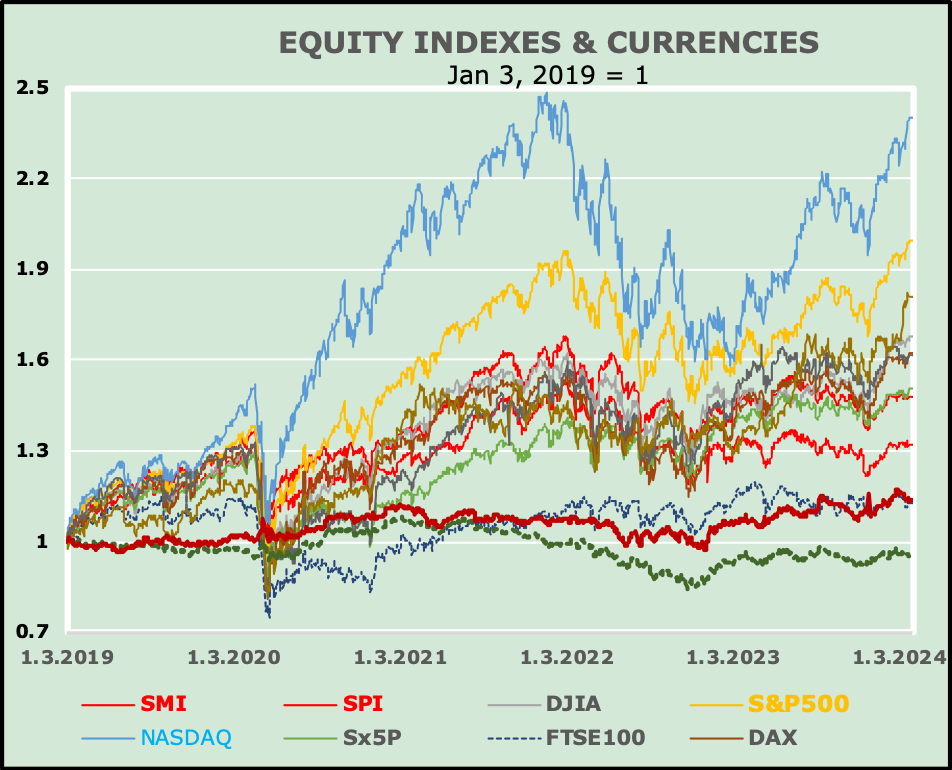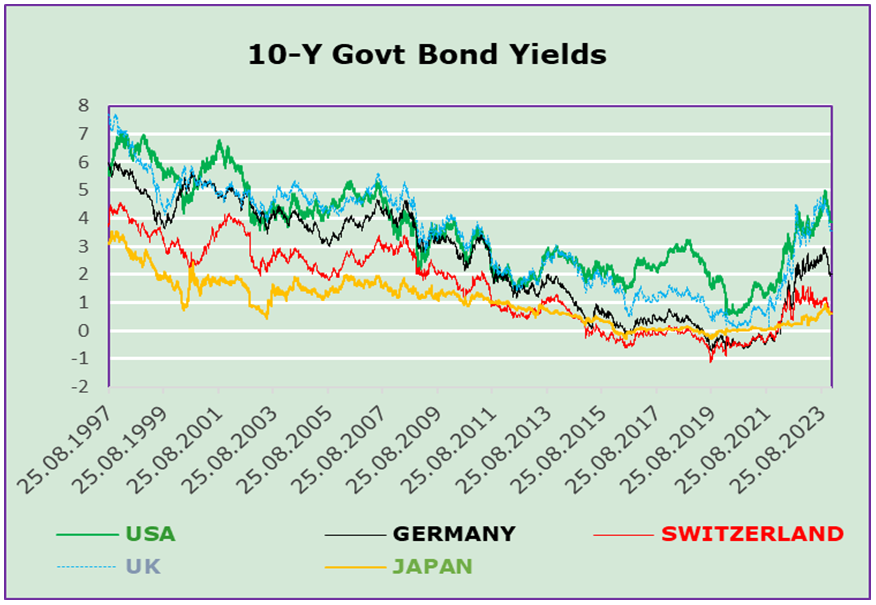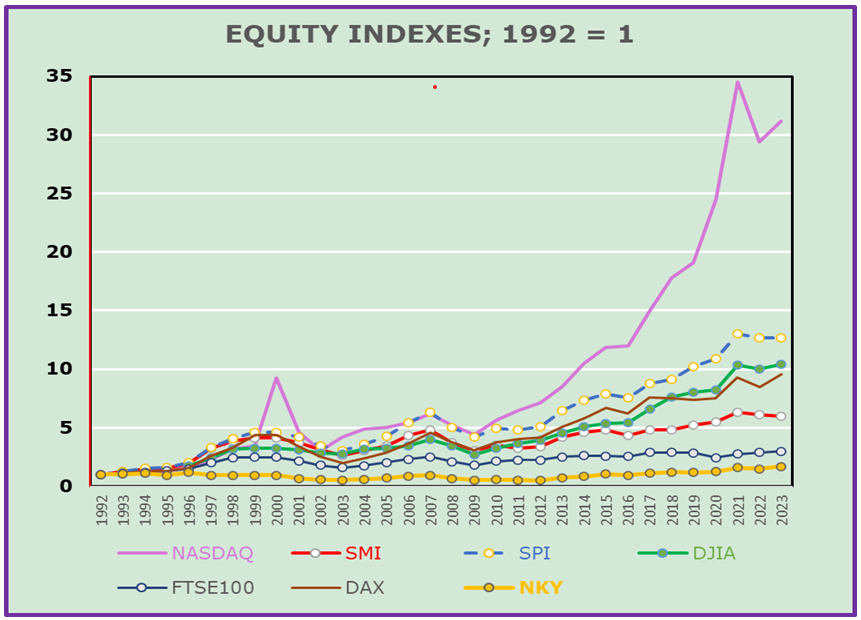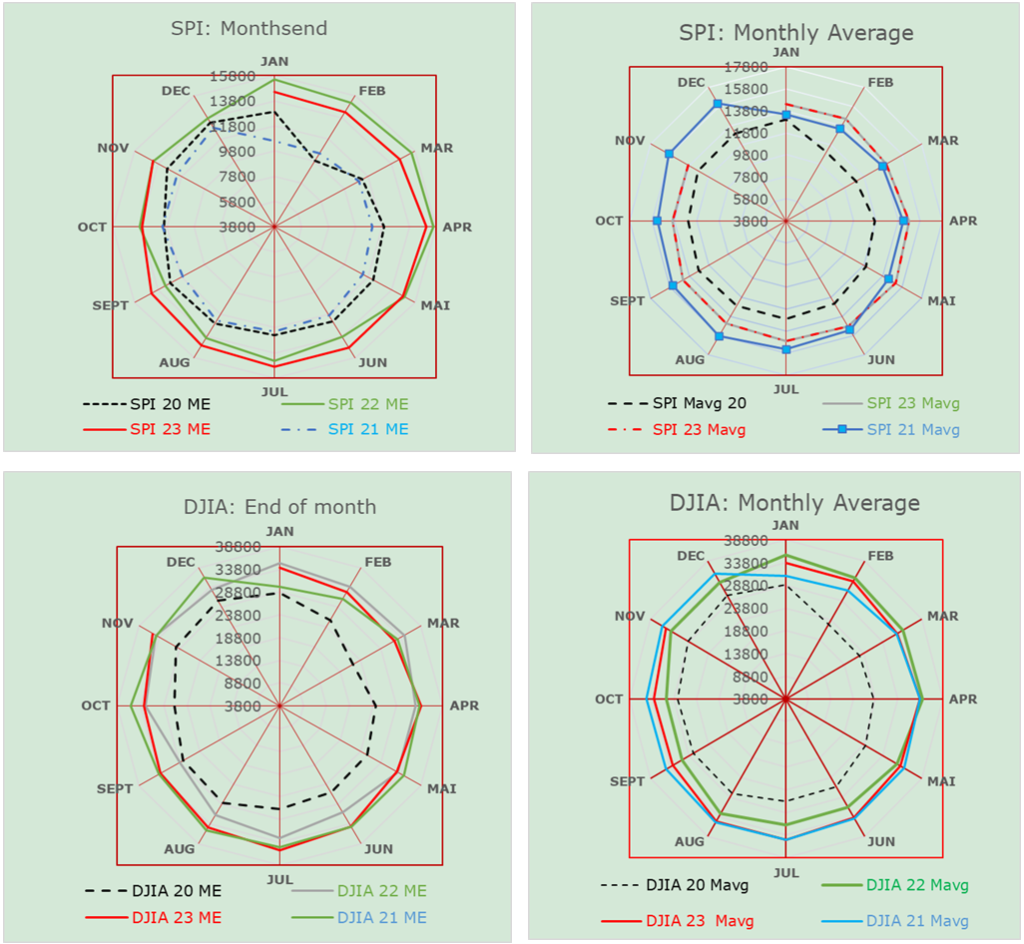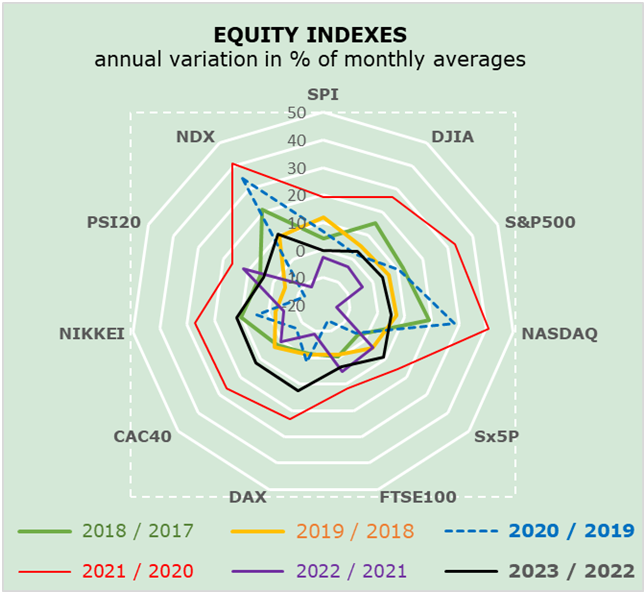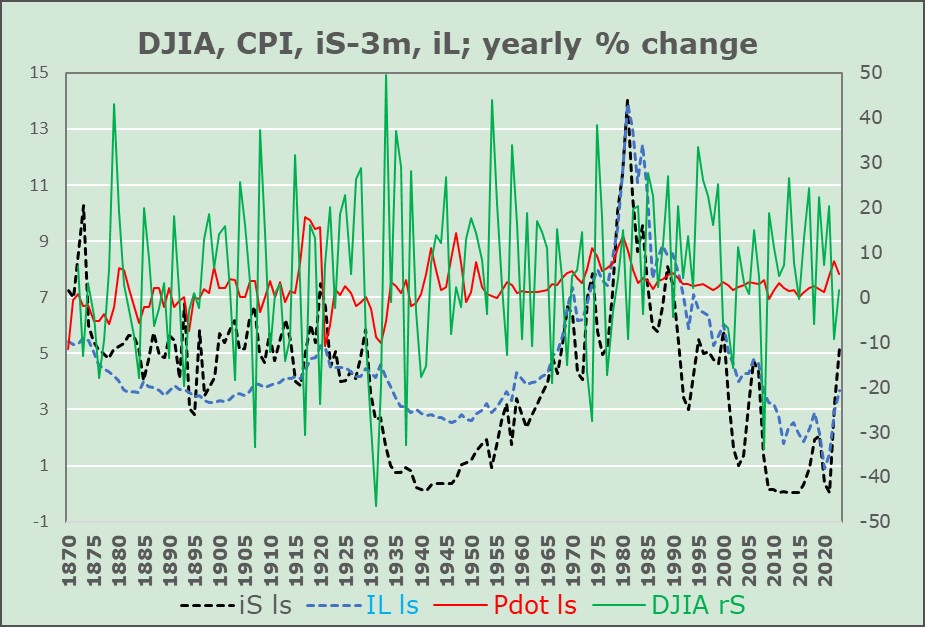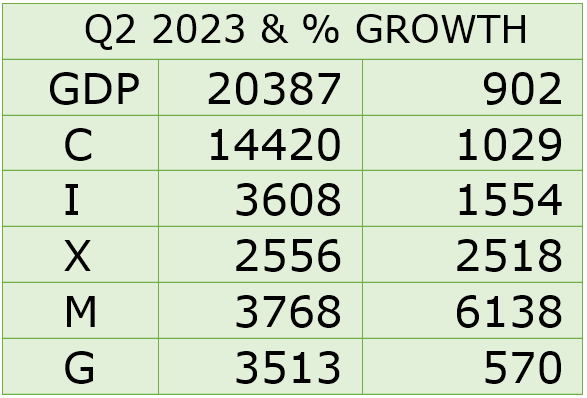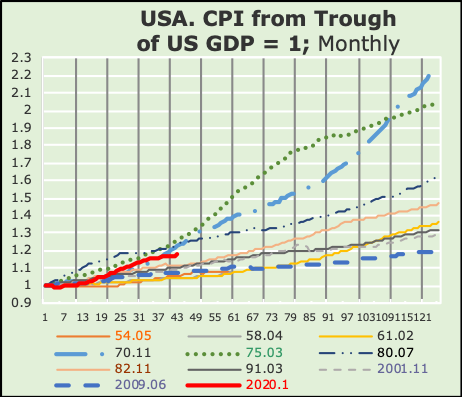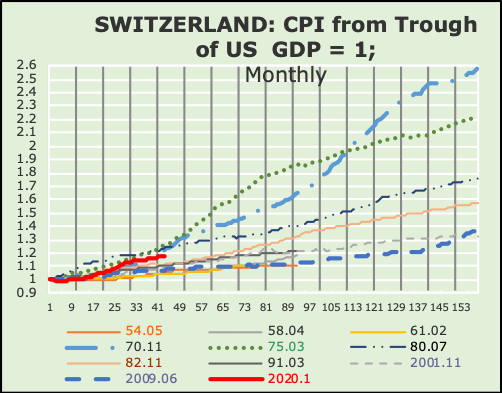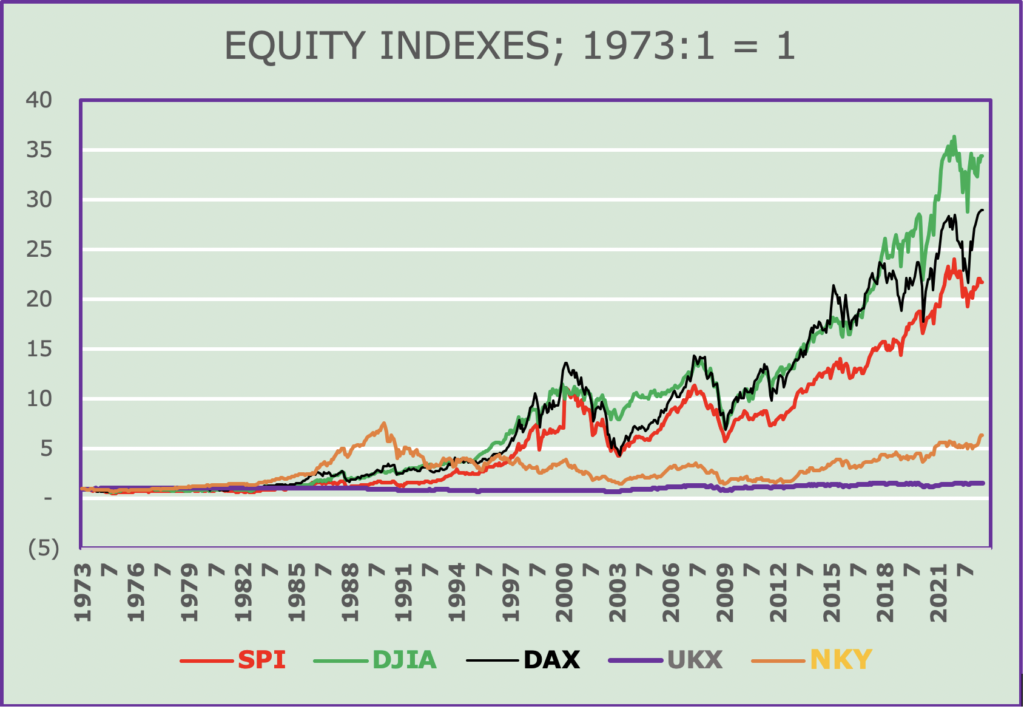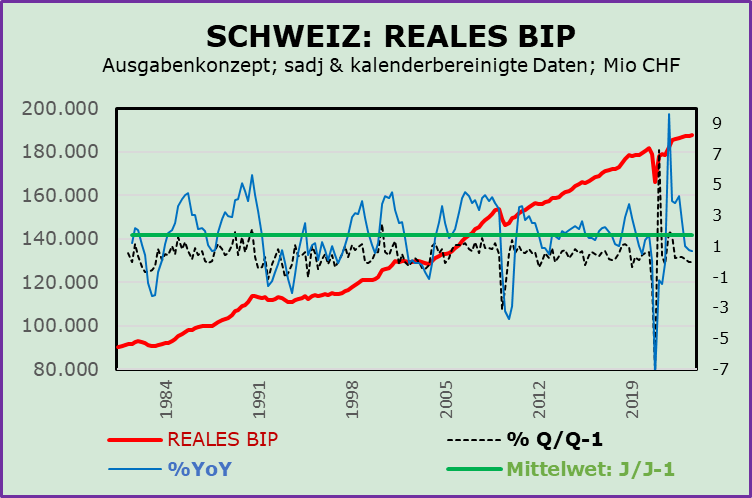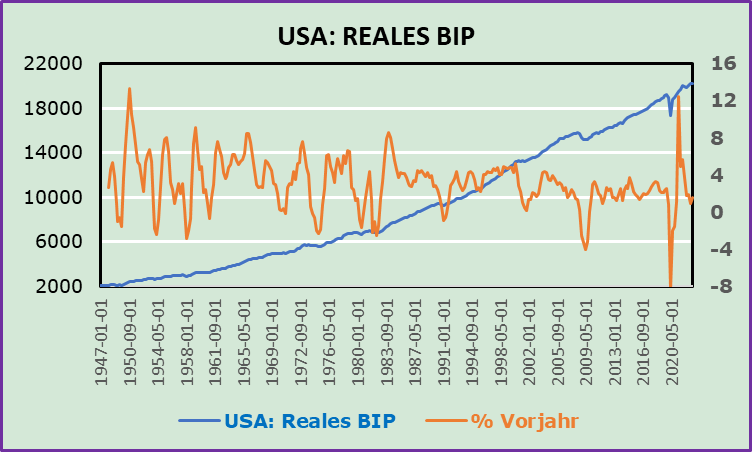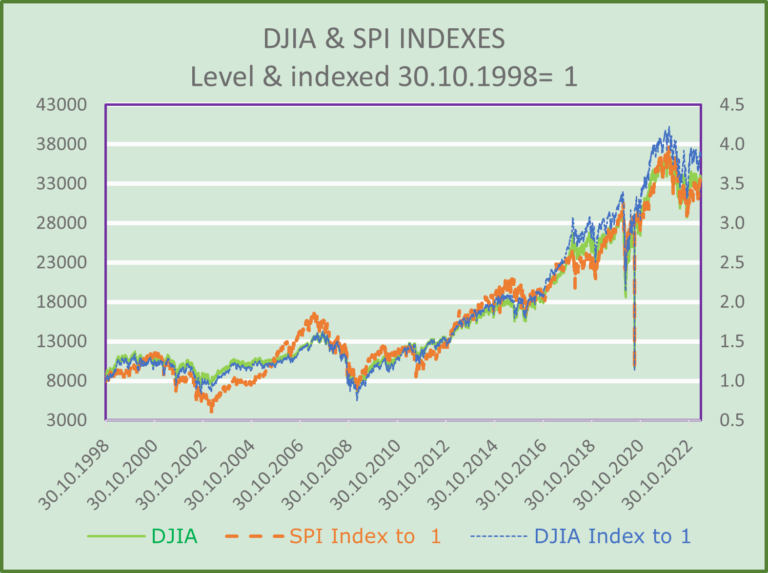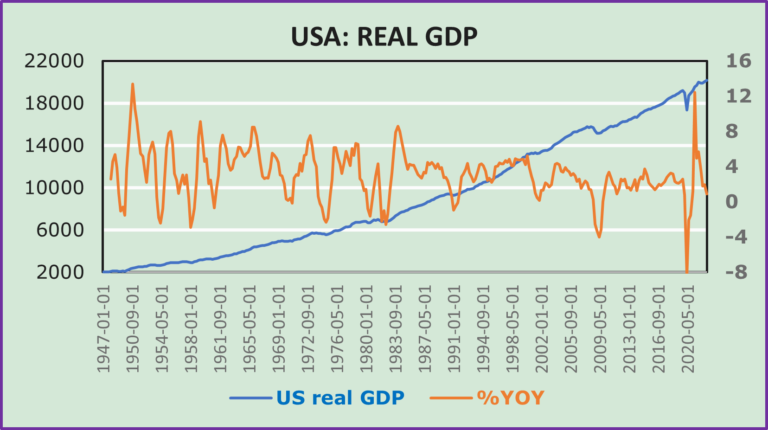EMR March 2024
Dear reader
GROWTH COMPARISON
The frequent repetition of comments – in the media – suggests that economic developments should be reasonably consistent from country to country. The charts, in this EMR, raise the question: What can be inferred from the performance of Swiss and US GDP for the respective equity indices and currencies, in the current uncertain and controversial environment? What follows is what we presume to know.
For simplicity and specific interest, let us compare the long-term trends of real GDP and respective primary components and pertinent currencies for Switzerland and the United States. The graphical representation of official data, released by ESA (Bundesamt für Statistik) and BEA Table 1.1.6 allow us to evaluate the respective trends of the “real” data with various projections and interpretation of the current economic trend.
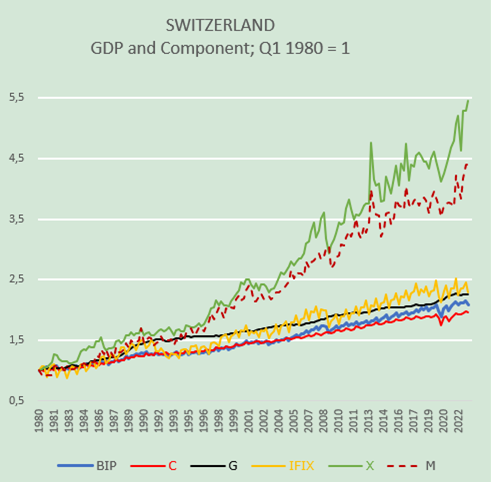
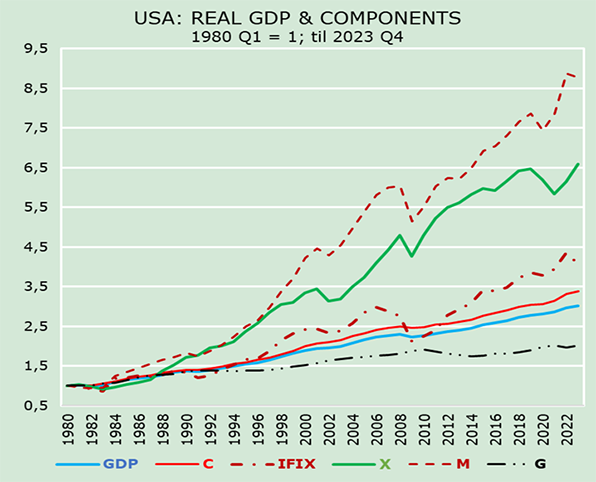
ASSESSMENT
Which conclusions can be drawn from the above shown charts?
A first conclusion that jumps to mind relates to the different growth trends between an open economy (Switzerland) and a relatively closed economy (the USA)!
A second argument concerns the differential performance of the five components of Swiss and US Gross Domestic Product. To facilitate the comparison, between the individual components we have indexed the respective series to 1 for the first quarter of 1980. The graphs clearly show that economic growth in the USA is 1.73 times that of Switzerland! Moreover, the differences have grown over the entire observation period. Significantly, short-term volatility is higher in Switzerland than in the USA. A markedly higher degree of volatility can be found in the data on international trade and corporate fixed capital formation. Analyzing the development of the individual components in relation to GNP growth requires a very differentiated view, both at a consolidated level and for each individual sub-component. What is not visible in the charts are the respective currency trends: the USD tended to depreciate and the CHF to appreciate.
A third deterministic difference concerns the trend and growth rates of exports and imports of goods and services. The Swiss exports growth rate has exceeded that of imports almost throughout the entire period. It is also accompanied by persistent volatility. The growth rate of US imports has outpaced that of US exports by an increasing margin, especially in the last 10 years. The inverse trend is also known to drive the respective currencies. At this point, we might ask, what does this trend differential mean for the in-vogue interest rate management of the respective monetary authorities?
A fourth significant difference is the weakness and volatility of Swiss gross fixed capital formation compared to the weak but growing US fixed investment. These differences are pronounced, and the deterministic reason for their persistence remains to be seen. It is important to consider the role of innovation in the US versus Switzerland and its implications for fine-tuning interest rates in the fight against inflation. These developments present a real puzzle.
Another potential concern is the relatively weak and steady growth rate of consumer spending and the limited contribution of government spending over time.
REQUIREMENTS
The official data used in the charts determine to a certain extent the fluctuations in the share indices shown. If we take a closer look at the development of the individual indices, the following observations can be made:
There is no doubt that technological innovation and change has had and will continue to have a significant impact on the performance of equity indices, and not just these. As can be seen, the NASDAQ and S&P500 have been particularly responsive to technological innovation. It should be noted that the focus should not only be on price changes, but also on the independence of the domestic economy. As mentioned in previous EMRs, these interdependencies should be taken into account. Therefore, it is crucial to provide a clear answer to the following question: Why have most analysts and forecasters focused so much on inflation and not on technological innovation?
We wonder why many commentators, journalists and economists continue to focus primarily or even exclusively on monetary policy as the primary influence on markets.
Analyzing the demand for technological inputs in low-cost economies presents a unique challenge. In our view, not enough attention has been paid to this approach so far.
If we look at the long-term performance of the EUR/USD and CHF/USD exchange rates relative to the equity indices presented, we see that their performance is relatively poor compared to almost all of the equity indices presented.
This sustainable approach requires answering the following question: Why have most analysts and forecasters focused so much on inflation and not on technological innovation?
Let us stress that the global economy has proven to be more resilient than expected, with falling inflation and no sharp rise in unemployment. However, there is reportedly a shortage of skilled workers and experts in various sectors.
CONSIDERATIONS
Any forecast is based on assumptions that may directly or indirectly affect the investment strategy and potential returns in the face of unforeseen events.
Since 1992 and over the last four years, the monthly performance of the equity indices is as follows:
It is unclear why the central banks’ focus on fighting inflation by adjusting interest rates has such a significant differential impact on the performance of the DJIA (+10.4%) compared to the Nasdaq (31.2%) or the NIKKEI (1.7%).
Assuming that the planned interest rate cuts by the U.S., Eurozone and Swiss central banks would not have an equivalent and significant impact on private consumption and business fixed investment, what would be the impact on consumer spending and investment be if a war were to break out, especially if it continued to hamper the development of international trade?
CONCLUSIONS
We continue to believe that war in Ukraine and the Middle East might remain more decisive than monetary intervention. In addition, we are concerned about the potential impact on world trade, due to the irregular performance of China, Russia and other competitors in the free world.
In other words: We expect volatility to remain high, especially in the first quarters of 2024, which will need to be managed primarily by adjusting sector and stock selection. The primary source of concern at present is none other than technology. In some sense it is viewed as a limit for the correlation between feared deindustrialization vs. economic liberty. The example of China is promising indeed. The Chinese example points to the importance of private enterprise as compared to “statalist” policies. Experts state that the Chinese economic miracle is not so much due to public policy, but rather the result of “private” efforts, so-called “grassroots capitalism”.
Our biggest fear is that the expected/feared interest rate adjustments by central banks in the free world will continue to be unsatisfactory due to the unbridled control of international trade by China, Russia and their respective alliances. In this context, the decisive factor for the development of inflation will be the period in which the possible/feared difficulties in the transit of goods through the Suez Canal cannot be overcome by interest rate adjustments.
A specific factor that will accompany us during 2024 is the presidential elections in the United States. It is very difficult for us to assess the possible outcome.
While a large majority of analysts set theirs focus on fighting inflation, we prefer to focus on economic growth especially international trade as the determinant of our Investment Outlook.
Suggestions are welcome.
